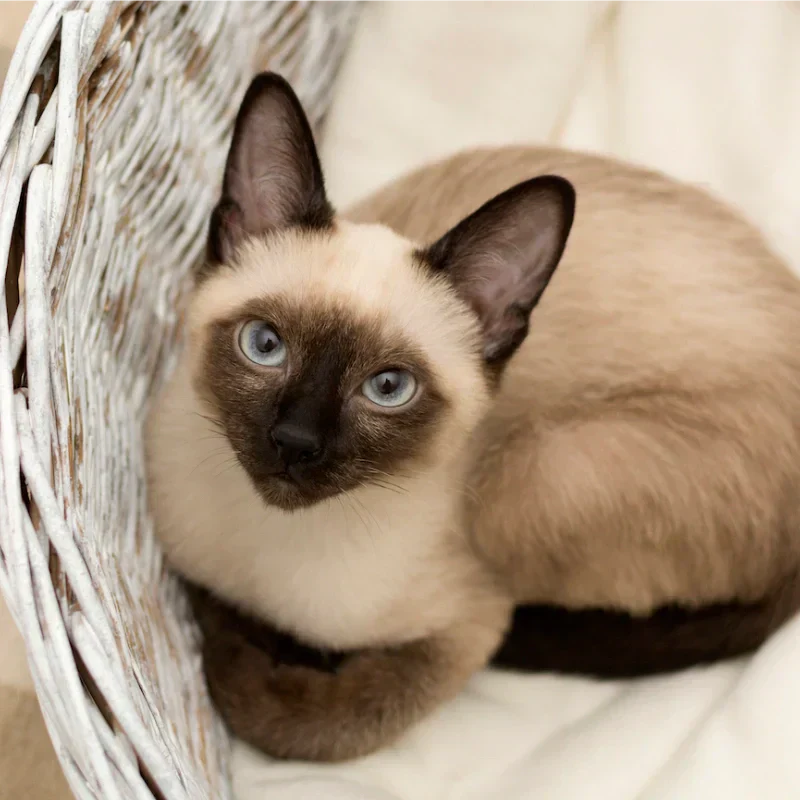Have you noticed how your Siamese cat secretly “turns” coffee-brown in winter, only to gradually “fade” back to its fair complexion in summer? This isn't your imagination—it's the Siamese cat's own scientific magic!
This happens because Siamese cats carry a special mutation in the TYR gene, turning the enzyme that controls black pigment—tyrosinase—into a temperature-sensitive switch. In cooler areas (typically below 33°C), this enzyme activates and produces large amounts of melanin. That's why parts like the ears, face, tail, and paws—which are farther from the heart and get colder—become darker. In the body's core areas where temperatures are higher (above 35°C), the enzyme largely shuts down, keeping the fur light.

Siamese kittens are actually born entirely white. It's only weeks after birth, when their extremities start encountering cooler external temperatures, that their signature “point coloration” gradually emerges. Inside the mother's warm, constant-temperature womb, the enzyme remains inactive.
While this color change is fascinating, watch for abnormalities. If your cat darkens inexplicably all over, check for low body temperature (like hypothyroidism). If a specific area suddenly lights, look for localized heat or inflammation. Last year, when my Siamese got spayed, her belly was shaved. The regrown fur turned dark—exposed skin cooled down, triggering a massive melanin surge!

Next time you see a Siamese cat's seasonal color change, don't be surprised. It's a survival art written into their genes! Have you heard that Siamese cats kept in northern regions often turn into “black coal balls,” while those in the south tend to stay lighter in color? Come share your Siamese cat's seasonal color transformation photos!


Share and get 15% off!
Simply share this product on one of the following social networks and you will unlock 15% off!